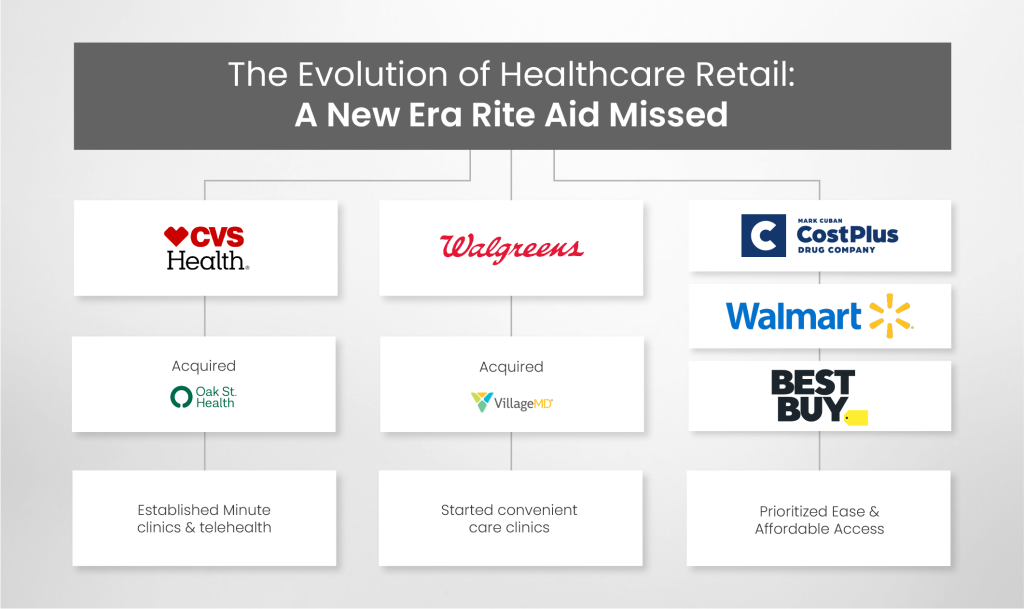In the competitive world of pharmacy giants, CVS and Walgreens have been thriving, while Rite Aid has filed for bankruptcy and is shutting down stores across the country. All 3 are household names, but the path they have taken in recent times has led them to this conclusion.

The reasons for this are rooted in several critical differentiators:
Diversified Business Models
CVS and Walgreens didn’t just expand; they transformed. CVS, for example, ventured into healthcare services by establishing minute clinics, embracing telehealth, and even delving into specialized drug therapy management. This is more than a mere expansion—it’s a strategic evolution. Similarly, Walgreens diversified by broadening its healthcare services, and embracing new technologies and healthcare delivery models. In contrast, Rite Aid remained focused on its traditional pharmacy model, missing opportunities to evolve with the changing healthcare landscape.
Strategic Movements and Partnerships
The strategic acquisitions made by Walgreens and CVS speak volumes about their foresight. Walgreens’ acquisition of VillageMD and CVS’s purchase of Oak Street Health are not just financial investments; they are strategic entries into the realms of primary care and value-based care. These are growing sectors in healthcare that promise sustainability and relevance in the coming years. Rite Aid, on the other hand, seemed to focus on expanding its physical footprint, as seen in its acquisition of Bartell Drugs. This strategy, while beneficial for local dominance, did not significantly diversify its services or offerings.
Prioritizing Ease and Affordable Access
The shift toward accessible and affordable healthcare is a trend that transcends traditional industry boundaries. Companies like Best Buy and Walmart are venturing into healthcare, indicating a broader shift towards consumer-centric care. Mark Cuban’s Cost Plus Drug Company is a prime example of this trend, disrupting the traditional pharmaceutical model by offering medications at significantly reduced prices. This movement towards affordability and accessibility is reshaping consumer expectations and the competitive landscape of healthcare retail.
My Takeaway
Looking at the success of CVS and Walgreens, it’s evident that their success is not merely a reaction to current trends, but a result of their anticipation and proactive strategies. Rite Aid’s more traditional approach highlights the importance of innovation and adaptability in today’s fast-evolving market. The proactive measures taken by CVS and Walgreens, along with the entry of new and innovative players like Mark Cuban’s venture, suggest a vibrant future for the U.S. healthcare industry. In such a dynamic ecosystem, there’s potential for even smaller players to rise and redefine the market.


